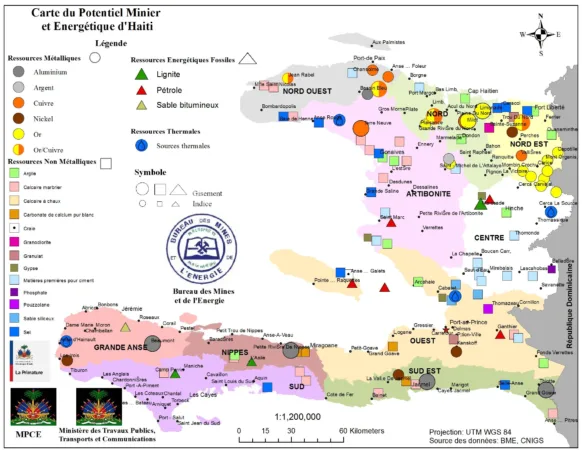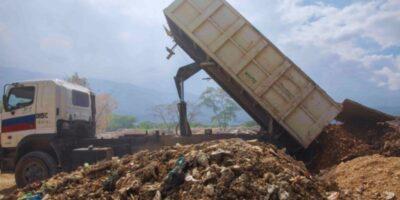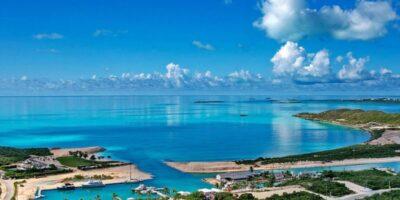Traces of iridium, oil, gold and copper actually exist in Haiti. But in what quantity? Four executives from the Bureau of Mines and Energy tell AyiboPost what is true and what is false on the mining issue
Next to oil or gold, iridium is one of the metals that many believe to exist in large quantities in the Haitian subsoil.
This metal’s history in the country is linked to the discovery of the Beloc formation, in Jacmel, by the Haitian scientist Florentin Maurrasse in the 1980s.
The amount of iridium discovered is “so small that it cannot in any way be the subject of any exploitation,” Claude Prépetit, director general of the Bureau of Mines and Energy (BME), told AyiboPost.
The head of the BME, as well as three other executives from the institution, spoke with AyiboPost on November 14, 2023 in order to part truth from falsehood about Haiti’s mining potential.
Indeed, a thin layer 75 centimeters thick was discovered in Jacmel, containing iridium.
The amount of iridium discovered is “so small that it cannot under any circumstances be the subject of any exploitation”
According to a widely-held scientific hypothesis, the presence of this layer could be justified by the Cretaceous-Tertiary biological crisis, during which a meteorite carrying the metal collided with the Earth. This would have led to the disappearance of the dinosaurs 65 million years ago.
According to information available on the internet and often cited in debates in Haiti, a ton of iridium would be worth 45 billion dollars on the international market.
For Claude Prépetit, this is information that does not correspond at all to the truth. “In reality, a ton of iridium is worth around $171 million. That’s three times more than gold,” he says.
In reality, a ton of iridium is worth about $171 million. Three times more than gold
Very rare in the earth’s crust, iridium is used in the electronics industry and space technologies. In 2019, annual global production only reached 8,000 kg.
With 83% of global production, South Africa is the leading producer of iridium in the world.
The information conveyed on mines in Haiti is “missing” most of the time and it does not allow the public “to get a more precise idea of the question,” analyzes engineer-geologist Claude Prépetit.
“It is not enough to say that we have this or that resource underground. You have to know how much of it there is. And if it’s worth exploiting,” continues the specialist.

Map of Haiti’s Mining and Energy Potential. | BME, Mars 2018.
Although Haiti’s mining and energy potential is better known today, this does not automatically mean it is rich.
“There is a long and costly process between the discovery of the resource in the subsoil and its effective economic development,” underscores Prépetit.
In reality, a mineral resource is a concentration of material present in its raw state in the earth’s crust. This material can be extracted according to a set of economic and geological parameters.
There is a long and costly process between the discovery of the resource in the subsoil and its effective economic development.
Oil is one of the subsoil resources often mentioned in debates on the country’s mining and energy potential.
According to Altidor Jean-Robert, head of energy resources at BME, there is a lot of false information circulating on this subject.
“On several occasions, I was called into the field to carry out research concerning information suggesting that a ‘refined’ gas mine had been discovered,” he explains to AyiboPost. “This demonstrates a lack of knowledge among people about what it actually is,” analyzes Altidor Jean Robert.
Because, not only is oil not found in a refined state in the subsoil, “but in the current state of our research,” he continues, “we cannot be positive about the presence of a reserve of significant and exploitable oil in the country.”

Area of potential and oil interest in Haiti.| BME, Mars 2018.
Research carried out by various foreign companies between 1945 and 1977 in Haiti, notably in Gonâve, Boucan-Carré and in the Plain of the Cul-de-Sac, made it possible to identify signs of oil in the subsoil, particularly in Gonâve.
“But, due to the lack of modern technical means and significant investments, research has not been able to confirm whether there is a significant oil reserve in the Haitian subsoil,” explains the geologist to AyiboPost.
As for mining itself, community activists point to the high potential for multi-generational environmental disasters in an already fragile country, contamination, the large amount of water required by the mines, and the potential for large-scale corruption that any initiative in this field could engender.
Read also : Pourquoi l’exploitation des mines en Haïti peut être un suicide collectif ?
Only a few rare metallic mining resources have been subject to actual exploitation in Haiti.
In 1944 and 1955, the Haitian state granted its first two operating permits to the Canadian company SEDREN and the American company Reynolds for the extraction of copper in the Newfoundland region and bauxite in the Miragoâne region. These two operations ceased in 1971 and 1982 respectively.
The 2000s saw a resurgence of interest in mining in the country.
Thus, in 2012 for example, new operating permits were granted by the Haitian state to foreign companies.
These concern the North East mining company (SOMINE S.A), which obtained two operating permits, the first for a copper mine in Terrier-Rouge and the other, a Faille B gold deposit in the commune of Trou du Nord.
Another operating permit was granted to the Delta Mining Company S.A. to exploit the Bossa gold deposit in Milot and Quartier-Morin. These three operating permits were all issued in 2012, during the presidency of Michel Martelly.
But in 2013, a Senate moratorium canceled these permits. According to the body, these were granted by the BME outside of legal standards.
Since then, metal mining activities have remained suspended in Haiti.
These three operating permits were all issued in 2012, during Michel Martelly’s presidency.
Haiti has at least three gold deposits located in the northern massif (that of Morne Bossa, Faille B and Grand Bois) valued at approximately 26.8 tonnes as well as deposits of copper, aluminum, lignite, silver, calcium carbonate (in Calebasier, Carrefour du Fort and Paillant), etc.
“There are interested companies who contact us, but we can do nothing,” Hermin Jean-Louis, engineer-geologist, responsible for mines and quarries at BME, tells AyiboPost.
If it still remains unexplored today, Haiti’s mining potential is likely to revive the country’s economy, according to BME officials.
“Given that a ton of gold is worth $57 million on the market today, this could constitute an interesting windfall for our economy,” underlines Louis Honoré Pierre, technical advisor to the general management of the Bureau of Mines and Energy.
However, a combination of factors, including a lack of interest on the part of the State, is blocking the momentum of Haiti’s mining sector, according to officials.
Read also : L’exploitation d’une mine d’or à la frontière entre Haïti et la RD fait peur
The BME is the only legal institution authorized to deal with the research and development of the riches of Haiti’s subsoil, whether in terms of exploration, research and granting of permits.
However, the material and financial conditions of this state institution do not allow it to carry out its work, aimed at boosting the mining sector throughout the country.
Indeed, in the 2023-2024 budget, only 100 million gourdes are allocated to it.
An insufficient amount to meet the requirements of the job, according to officials.
“Besides, more than half of this money is used to pay salaries,” says Claude Prépetit, director of the BME.
In addition, the BME should have the means to travel around the country to carry out prospecting and supervision.
“We only have a few vehicles at the moment. Added to this, a good part of our staff has left the country. Which worsens the operating conditions of the institution,” explains engineer Claude Prépetit.
The laws are also inadequate.
Haitian mining legislation dates back to 1976. A new mining law has been awaiting ratification in parliament since 2014. The law on quarries, for its part, dates back to 1984.
For Claude Prépetit, “this is an obsolete legal framework that no longer holds water.”
© Cover Image : Endeavour
The video interview with the BME recorded on November 14 will be broadcast soon on all AyiboPost platforms.
Stay in touch with AyiboPost through :
► Our WhatsApp channel : click here
► Our WhatsApp Community : click here
► Our Telegram canal : click here







Comments